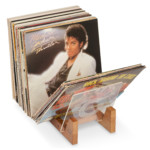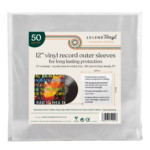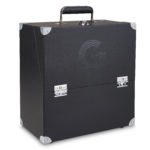If you are in the game of vinyl record collecting you are, at one point or another, going to be purchasing records and / or selling them off, whether to buy more or simply to get back some of the valuable capital lost to the cause. In these instances, you are almost certainly going to want to know and are going to ask just how are vinyl records graded?
Seeing as the world of vinyl record collecting is so democratised, so much led by the user base and so much kept alive by this rampant user base, it can often be a difficult world to navigate, especially without the proper guidance.
Thankfully, there have been definite measures placed and imbibed within the medium itself, whether in person or online, to help with this, and these will be of value to any one seeking to pave their own way in the world of vinyl record collecting.
Seeing as even the language it’s written in can be so open to interpretation, language itself such a multivalent maze of allusions and directional pointers, this guide itself is very much open in the same way, so all descriptions should be headed but taken with a pinch of salt.

Basic Universal Grading System
As previously mentioned, there is a relatively universal and easy to comprehend basic grading system among the vinyl communities throughout the world, so as to make communication between the various communities like so a little more lubricated and lucid, and to provide a reasonably simple answer to the question, ‘how are vinyl records graded?’
This grading system can be approached from any pole, from either those records which have seen so much use as to be unlistenable to those that have been so rarely played as to be like new. Today, we will be starting from the latter point and working our way downwards, reducing our definitions of quality at each stretch.
The definitions and descriptions will be applied separately to the vinyl record itself and the record sleeve that it comes in, though, owing to the previously mentioned multivalence of language, these terms can be applied to both with very little confusion. Both the sleeve and the record itself will tend to be graded separately, or at least ought to follow the lead of trailblazers in the field like Discogs.
Mint Condition
To receive a vinyl record in mint condition is to receive a product that is considered to be perfect. The record itself will be unmarked and will play perfectly without any surface noise, surface marks, or any other such interruption other than perhaps from the record player, needle, turntable etc.
The same goes for the sleeve: if it is deemed to be in mint condition then it should come to the purchaser in perfect condition, without any marks, scuffs, scratches, bends, or other aesthetic deteriorations.
Thus, if we say a record and its sleeve are in mint condition, they are likely to be exemplars of how vinyl records are graded, acting as one of the poles of ascertaining a record’s grading, the upper most. We can safely assume that a record in mint condition is likely to be unplayed and unopened, as exposing the record and its sleeve to the elements in this way automatically opens them up to damage from the very first second; even the air around us is full of corrosive elements and dangerously harmful chemicals and pollutants.
Near Mint Condition
You will likely be able to follow the overall logic of this grading system thus far, and therefore you will be able to see that, in being associated so closely with those of mint condition, a record categorised as being in near mint condition will be just that much more used than a record labelled as mint.
Many of the aesthetic indicators associated with records of a mint condition will be very similar if not the same as those of a near mint condition record, the main difference being that a near mint condition record has been opened to the elements, either not played at all or played a maximum of a few times.
Many sellers will not use a higher grading than near mint, likely because so many of the descriptors are exactly the same and it is very rare to come across a record on such websites that is completely unopened and fresh.
Thus, looking for a near mint record will yield roughly the same results in your search for the perfect as otherwise. They will be shiny and won’t have any visible defects, a perfect example of how are vinyl records graded. There will be no writing, markings, or stickers on the label or sleeve, nor will there be any ring wear, creases, or seam splits.
Excellent Condition
There is a very slight reduction in quality between a record and sleeve in near mint condition and one that is deemed to be in excellent condition. The main indicator of difference between the two is stress marks from the removal of the record from the sleeve and into the sleeve.
The same will go for the sleeve, with very slight signs of wear and use being tolerated in the gap between near mint condition and excellent condition records. As with the rest of the grading system, the gradations in quality, both aesthetically and sonically will be minimal and should be taken with a pinch of salt.
This system that maps out how are vinyl records graded is only a rough guide and shouldn’t be read totally as gospel; despite a system like this still being in place, it is only meant as a way to navigate via your own means the more often than not overwhelming world of vinyl record collecting.
Very Good Plus Condition
Decreasing in quality in this vein we reach those records that are deemed to be in a condition like very good plus. While there may be slight faults in a product at this grading level, whether aesthetic or sonic, they must not, if they are to be so graded, hinder the quality of the product. This means that neither the visual or audible elements must not be comprised, lest a lower grading should be used instead.
Therefore, even if it plays perfectly and can be appreciated visually, a record of this grading has the right to bear some light and inaudible marks, as those that might be present on records used frequently by disc jockeys in dark environments.
Thus this is a peg on the vinyl grading system that ought always to be aspired to, as it is more often than not a mark of considerable quality. Many classic albums from their original years of release which have been lovingly played and cared for are likely to bear this grading if put up for release.
Very Good Condition
Moving on in this expedition to learn just how are vinyl records graded, we come across those that are deemed to be in very good condition.
Little separates this category from the previous, though that which does is very important. Where there ought not have been any detriment to the sound quality in those of very good plus condition, here there is allowance for the presence of slight clicks and pops, use being obviously present in the sound and / or visual aspects of the record in question.
What makes this a very good condition for a record is the fact that it is still more than usable, that it can still be enjoyed both sonically and visually. This is, of course, fairly subjective criteria, so all those lo-fi enthusiasts ought here to take enjoyment to include audio fidelity.
Good Condition
For a record to be bestowed with the label of being in good condition, it should have been or should at least show signs of having been played extensively. This will be indicated by a significant deterioration in the fidelity of the audio and the visual element of the product, marred as the cover and back cover might be with marks, bends, scuffing, folding, discoloration and spine splits in the material.
Products of this category will be more often than not affected with more obvious scratches on their surfaces, both the cover and disc in question, though with the latter also prone to obvious distortions in the playback of audio.
Since these are the signs of a product seriously marred by negatives, it is recommended only to sell items in this condition as opposed to buying them. Even in selling such items, they are less likely to be bought by other record enthusiasts in this condition unless they are particularly sought after records, such as those less common or those that are harder to find elsewhere.
Fair Condition
In learning how are vinyl records graded, there come those records which have certainly seen better days and which suffer as a result, better days where they were either more properly cared for or simply young enough to take the damage. There will be significant hiss and surface noise in a record of this condition, with some even carved with such deep cuts and scratches as to propel the stylus and needle across the record, as though it doesn’t even want to be played anymore and wants to die in peace.
The cover, likewise, will be in a sorry condition, stained, torn, defaced, or otherwise damaged by human and environmental intervention.
Poor Condition
A record in such a condition as this will be deemed poor when it is literally unable to play correctly because of its surface defects, its scratches and damages. The listening experience will rarely be completely similar to the recorded intention of the artist whose record it is, with these various defects acting as a barrier between the listener and the artist in question and constantly skipping.
The cover will be damaged as before, sometimes missing pieces, whether of the actual cover itself or of the additional elements that sometimes come with a record, sometimes it will even be missing.
Bad Condition
At the very bottom of this spectrum of how are vinyl records graded we find those that scarcely see the light of day, so damaged are they and so averse are they to actually being played.
In fact, those of this category are by their very nature unplayable, for being broken or so damaged by scratches as to evade the grasp of the needle.
Final Tones
So, there it is, a comprehensive spectrum of the vinyl grading system and, hopefully, some definitive answers to any questions orbiting around our central question: just how are vinyl records graded!
FAQs How Are Vinyl Records Graded
Being so subjective an industry anyhow, you will simply have to match the records that you wish to rate on the spectrum of vinyl grading against the common descriptors for each category, approximating and hoping for the best, being as honest as you possibly can.
The aesthetic elements should be some of the most easy to spot. In the case of the cover, simply looking at the front and back and checking whether all of the extraneous elements are present will immediately give you a sure fire indicator as to the aesthetic grading. Similarly with the actual record, just holding it up to the light and checking for scratches will likely give you plenty of information before even spinning the record to check the audio quality.
Indeed you can, and with elements such as this abounding on the internet I should hope very easily too.
The numbers stamped towards the centre of a vinyl record on the actual vinyl itself are usually indicators of the issue number of the record in question, the number of versions of this record that have thus far been produced and / or the side of the record that it is stamped on. This latter aspect is of particular use to those in the pressing plant who are tasked with adding instructive stickers onto the records and don’t have the luxury of being able to check every single record.




